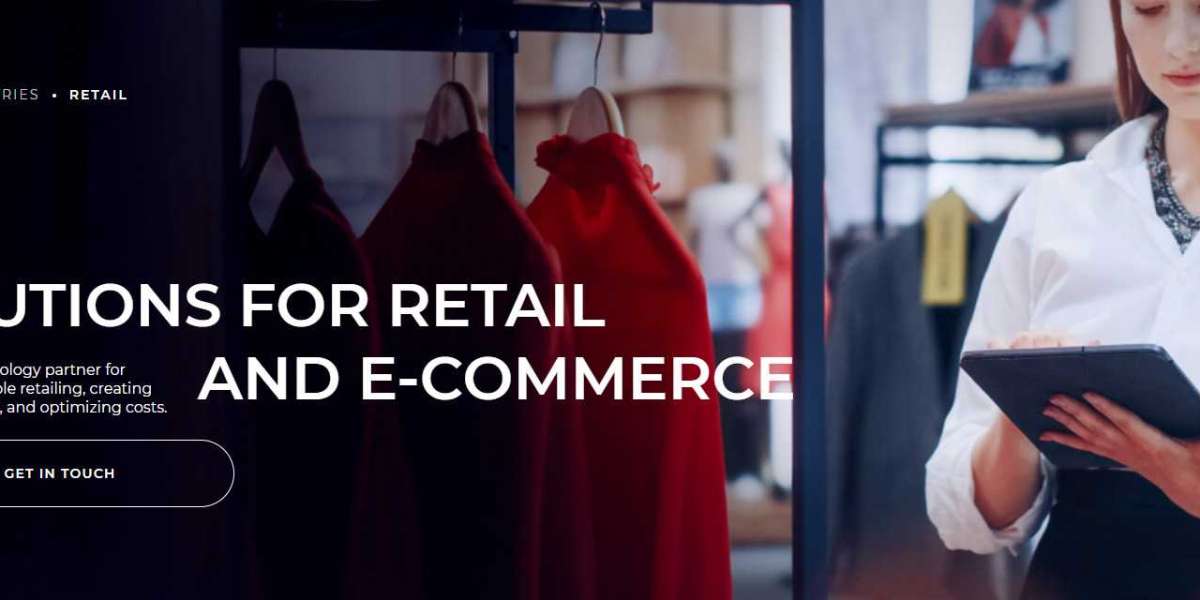The retail industry has always been at the forefront of technological evolution. From barcodes and cash registers to cloud-based software and mobile checkouts, Point-of-Sale (POS) systems have been one of the most critical enablers of seamless retail operations. As we step into 2025, the landscape of retail POS systems is undergoing a profound transformation — driven by customer expectations, AI-driven personalization, supply chain challenges, and omnichannel commerce.
For businesses that want to stay ahead, it’s no longer enough to have a “basic POS.” Instead, retailers must look for platforms that integrate seamlessly with their broader operations, help them understand their customers better, and enable them to provide smooth, flexible experiences across online and offline channels.
The Evolution of Retail POS Systems
Traditionally, POS systems were primarily focused on sales transactions — scanning items, processing payments, and generating receipts. While this is still a core function, the role of POS systems has expanded dramatically over the last decade.
Modern POS platforms now act as the central hub of a retailer’s ecosystem, connecting inventory management, customer relationship management (CRM), e-commerce platforms, loyalty programs, and advanced analytics. The shift toward omnichannel commerce — where customers expect a seamless experience whether they buy online, in-store, or through social media — has made this integration essential.
By 2025, POS systems have evolved into intelligent, data-driven platforms that help retailers not just process transactions but also optimize operations, personalize marketing efforts, and enhance the customer experience.
Must-Have Features for Retail POS Systems in 2025
To stay competitive, retailers should look for POS systems that go far beyond simple checkout functionality. Here are the essential features that are non-negotiable in 2025:
1. Cloud-Based Architecture
Cloud-based POS solutions have become the standard, offering several key benefits:
Remote Access: Retailers can manage multiple locations from anywhere, in real time.
Scalability: Adding new stores, pop-up shops, or kiosks is seamless without complex hardware setup.
Automatic Updates: Security patches and feature updates roll out automatically, reducing IT overhead.
Data Security: Cloud providers now offer enterprise-grade encryption and compliance with global data protection standards.
2. Omnichannel Integration
A modern POS must unify online and offline channels:
Shared Inventory: Real-time synchronization prevents stock-outs and overselling.
Unified Customer Profiles: Whether a customer buys online or in-store, their history, preferences, and loyalty points are visible to staff.
Buy Online, Pick Up In Store (BOPIS): This feature has moved from “nice-to-have” to mandatory.
3. AI-Powered Analytics
Artificial intelligence is revolutionizing how retailers use data:
Predictive Inventory: AI can forecast demand, helping retailers stock the right products in the right quantities.
Dynamic Pricing: Adjust prices based on demand, competitor pricing, or inventory levels.
Customer Insights: Personalized recommendations and targeted promotions based on purchase history.
4. Mobile POS Self-Checkout
Flexibility at the point of sale is crucial:
Tablet-Based POS: Staff can assist customers anywhere in the store.
Self-Checkout Kiosks: Customers can complete transactions independently, reducing wait times and improving satisfaction.
Contactless Payments: Mobile wallets and tap-to-pay options are now expected by consumers.
5. Offline Functionality
Even in 2025, internet outages still happen. A robust POS should:
Process Transactions Offline: Store data locally and sync automatically once the connection is restored.
Avoid Revenue Loss: Retailers cannot afford downtime that prevents sales.
6. Advanced Security Compliance
Cybersecurity threats are growing. Retailers must ensure:
End-to-End Encryption: Protects sensitive customer data during transactions.
PCI DSS Compliance: Meets industry standards for card payments.
User Access Controls: Prevents unauthorized staff from accessing critical information.
7. Loyalty and Marketing Tools
POS systems are now expected to be engagement hubs:
Built-in Loyalty Programs: Points, rewards, and exclusive offers.
Personalized Promotions: Triggered by customer behavior.
Automated Campaigns: Integration with email and SMS marketing tools.
Key Trends Shaping Retail POS in 2025
Along with the must-have features above, several emerging trends are defining the next generation of POS systems.
1. AI Machine Learning at the Core
AI isn’t just a feature — it’s becoming the engine behind POS intelligence. Systems can now:
Identify shopping patterns to create micro-segments.
Reduce shrinkage by detecting suspicious behavior.
Suggest optimal staffing levels based on predicted foot traffic.
2. Hyper-Personalization
Retailers are using POS data to deliver one-to-one experiences:
Personalized offers displayed at checkout.
Tailored upsell recommendations.
Exclusive discounts for high-value customers in real time.
3. Sustainability Tracking
Eco-conscious consumers are demanding more transparency:
POS systems now track carbon footprint per order.
Integration with sustainable supply chain data is becoming common.
Retailers can display “green” metrics to customers at checkout.
4. Voice-Activated and Conversational Interfaces
The rise of conversational AI has entered the retail space:
Staff can check inventory using voice commands.
Customers can interact with kiosks using natural language.
POS systems integrate with chatbots for post-purchase support.
5. Integration with Emerging Payment Methods
Beyond credit cards and mobile wallets, POS systems are adding support for:
BNPL (Buy Now, Pay Later) providers.
Cryptocurrency payments where legally supported.
Biometric authentication such as facial recognition.
6. Edge Computing for Faster Processing
To reduce latency, POS systems are leveraging edge computing:
Processing data closer to the source ensures near-instant transactions.
Useful in high-volume environments such as grocery stores and quick-service restaurants.
The Role of Custom Retail Software Development
While many off-the-shelf POS solutions exist, custom retail software development allows businesses to build systems tailored to their exact needs. A custom-built POS can integrate deeply with proprietary inventory systems, ERP platforms, or niche payment gateways — creating a competitive advantage.
Companies like Zoolatech specialize in helping retailers design, develop, and maintain such solutions. With expertise in software engineering and UX design, Zoolatech can create scalable, future-ready POS platforms that meet the unique demands of global retailers.
This approach also allows for:
Better Data Ownership: Retailers maintain control over their customer and sales data.
Custom Workflows: The software can reflect how a business truly operates.
Long-Term Cost Savings: Avoids subscription fees and per-transaction charges of SaaS solutions.
Challenges and Considerations
Adopting or upgrading a POS system in 2025 still comes with challenges:
Implementation Costs: Hardware, software, and training investments can be significant.
Change Management: Staff must be trained to adopt new systems effectively.
Cybersecurity Risks: As POS systems become more connected, they also become targets for cybercrime.
Vendor Lock-In: Businesses must ensure flexibility to switch providers if needed.
Working with experienced partners like Zoolatech mitigates many of these risks by providing guidance on architecture, security best practices, and long-term support.
Preparing for the Future of Retail POS
Retailers cannot afford to view POS upgrades as a one-time project. Instead, they must adopt a continuous improvement mindset, leveraging emerging technologies like AI, AR/VR experiences, and IoT integrations.
A future-proof POS strategy involves:
Regular system audits to ensure security and performance.
Ongoing training for staff to maximize the use of new features.
Close monitoring of industry trends to stay ahead of competitors.
Conclusion
The year 2025 marks a pivotal point for retail POS systems. No longer just a tool for processing payments, the POS has become the nerve center of the retail operation — enabling omnichannel commerce, driving customer engagement, and unlocking valuable insights.
Retailers looking to succeed must prioritize features like cloud architecture, AI-driven analytics, omnichannel capabilities, and advanced security. At the same time, they must remain agile, ready to integrate with new payment methods and leverage emerging technologies such as conversational AI and edge computing.
For businesses seeking tailored solutions, investing in retail software development with experts like Zoolatech offers a strategic advantage — enabling innovation, scalability, and a truly differentiated customer experience.








